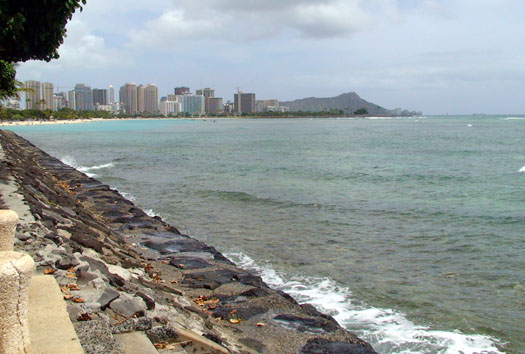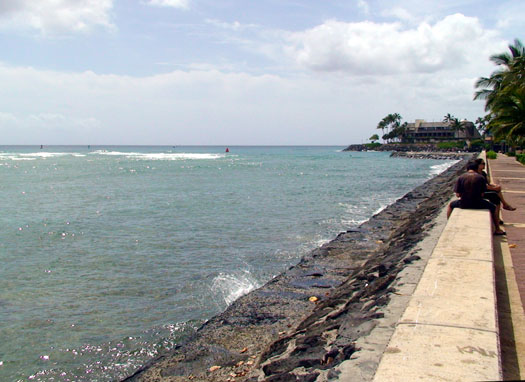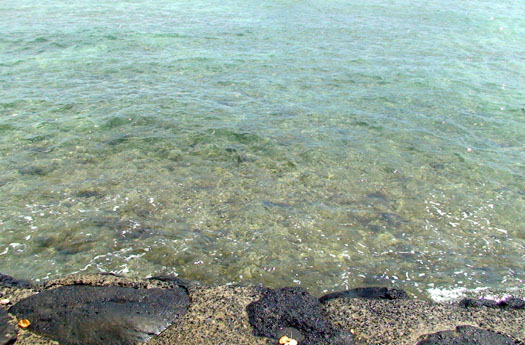
This was closest of the low-intertidal or shallow-subtidal reefs I could get to from the university. Just west of Ala Moana Beach Park was the Kewalo Basin harbor. Going makai from Ala Moana Boulevard at the eastern edge of the harbor, past where McWayne Marine used to be for you old timers, you'd get to the University's Kewalo marine mammal research station. Along the seawall just past the marine station and on to the west, you could snorkel and float in less than a meter of water turning rocks.
Melibe pilosa was very common here, along with other shallow water species such as Facelinella semidecora, Chromodoris aspersa, Dendrodoris nigra, Discodoris lilacina, and Favorinus japonicus.
Now the Kewalo marine mammal station is no longer in the same spot. The whole outer edge of Kewalo Basin has been turned into a park. It is certainly more attractive than the parking lot and piles of boat parts and other junk that were once there, but they also rebuilt the sea wall when they made the park. I made a quick trip there in March, 2009, when these photos were taken. I did a short snorkel and found the nearshore piles of rocks that hid the nudis were not as extensive as they used to be. I saw only a single Goniobranchus verrieri and three Dendrodoris nigra. Curiously, the sea lettuce algae Ulva, which I remember being abundant here, was not present at all.



Close tab when finished.